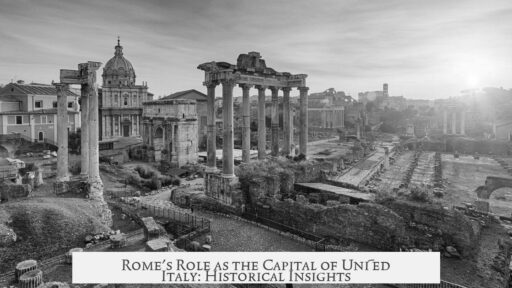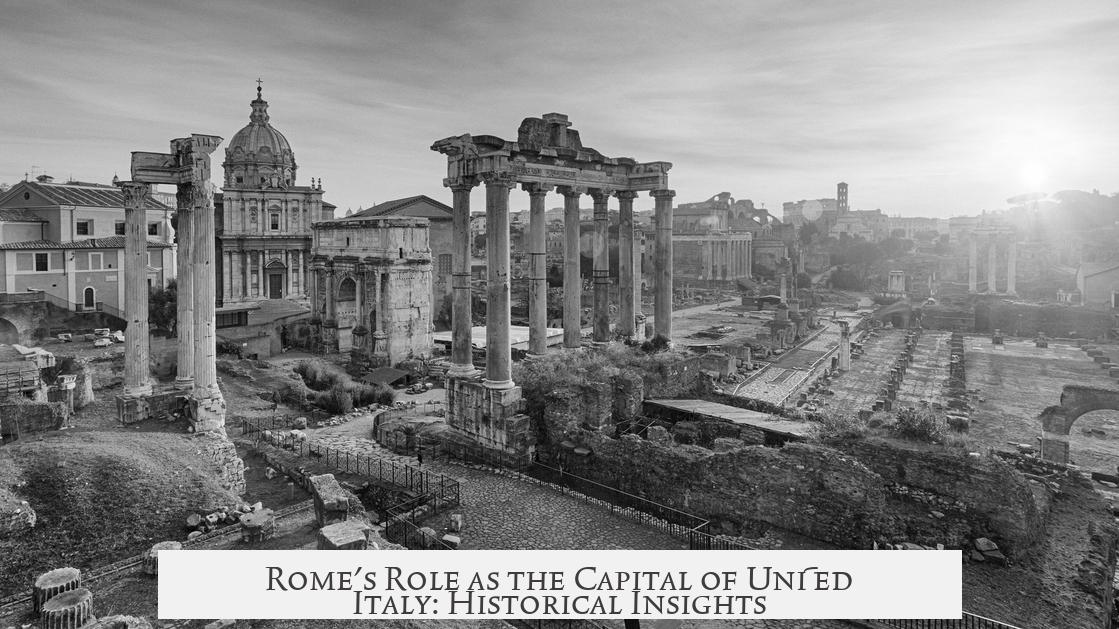Rome became the capital of unified Italy due to its immense prestige and symbolic importance, despite initial political obstacles involving the Papal States and French protection. The selection was rooted in unification efforts, strategic political moves, and eventual military annexation enabled by shifting European conflicts.
After Italy unified in 1861, Turin was the initial capital because it was already the capital of the Kingdom of Sardinia-Piedmont, the state that led unification. Turin had a central role in the Risorgimento and was a logical starting point. However, retaining Turin as the capital risked fueling resentment and the perception that unification was a Piedmontese annexation. Its location and identity tied too closely to the old state, limiting national cohesion.
Moving the capital elsewhere could foster unity and legitimacy. Rome, referred to as the “Eternal City,” held vast symbolic value across Italy and the Western world. It was deeply embedded in Italian identity and Western civilization as a seat of power, culture, and history. Choosing Rome signaled a new nation grounded in heritage rather than a regional power base.
Rome’s status as capital was complicated at unification because it was still part of the Papal States under Pope Pius IX. The Pope insisted Rome was exclusively his domain, supported by French military forces stationed to protect papal sovereignty. This protection prevented immediate annexation and delayed Rome’s integration.
Because of these diplomatic realities, the Italian government initially moved the capital from Turin to Florence in 1864. Florence was strategically positioned closer to Rome than Turin. This move reassured France and the Pope that Italy respected papal territorial claims. The House of Savoy settled in Palazzo Pitti, but privately, they aimed to make Rome the final capital.
The king and the royal family were reluctant to leave Turin for Rome at first, partly due to personal preferences and attachment to the Alpine region. They also faced local opposition from Turin’s citizens, who resented losing the status and economic benefits of being the capital. Turin’s population shrank after ministries and embassies relocated.
The opportunity to seize Rome came in 1870 during the Franco-Prussian War. France withdrew troops from Rome to focus on its own conflict. Italy exploited this distraction, sending its army through Porta Pia to annex Rome. This military action ended papal control and fully integrated Rome into Italy.
Following annexation, Rome was officially declared the capital in 1871, ending Florence’s temporary status. This transfer marked the completion of Italian unification. Rome’s selection solidified Italy’s national identity by linking the modern state to a powerful historical and cultural legacy.
| Timeline | Events |
|---|---|
| 1861 | Italy unifies; Turin is capital; Rome proclaimed capital but not controlled by Italy. |
| 1864 | Capital moves to Florence to ease tensions with France and papacy. |
| 1870 | Franco-Prussian War; France withdraws troops from Rome. |
| 1870 (Sept) | Italian forces enter Rome, annex it. |
| 1871 | Rome officially becomes capital of Italy. |
- Turin was the first capital due to Sardinia-Piedmont’s prior role.
- Keeping Turin risked perceptions of Piedmontese dominance over Italy.
- Rome’s historic prestige made it ideal for unifying identity.
- Papal control and French protection delayed Rome’s annexation.
- Florence served as a temporary political compromise capital.
- The Franco-Prussian War allowed Italy to annex Rome in 1870.
- Rome’s status as capital was finalized in 1871.
Rome’s rise as Italy’s capital represents a strategic blend of symbolism, national unity, and realpolitik. Its selection connected Italy’s modern statehood to foundational cultural and historical roots, helping shape Italy’s national narrative while navigating complex international and religious politics.
Why was Turin initially the capital of unified Italy?
Turin was the first capital because it was already the capital of Sardinia-Piedmont, the state that led Italy’s unification. It served as a starting point for the new Italian state.
Why did Italy decide to move the capital from Turin?
Keeping Turin risked making unification look like Sardinia-Piedmont was just expanding its territory. Politically, this was unwise. Moving the capital helped avoid stirring regional resentment and gave unity a stronger image.
What made Rome the preferred choice as the final capital despite the delay?
Rome held great prestige and symbolic importance for Italy and the Western world. Its status gave legitimacy to the new state, even though it was not part of Italy at unification and had many obstacles.
Why was Florence the temporary capital before Rome?
Rome was part of the Papal States and protected by France. To appease France and avoid conflict, Italy moved the capital to Florence, closer to Rome but respecting Papal control for a time.
How did Italy finally make Rome its capital?
During the Franco-Prussian War in 1870, France pulled troops from Rome. Italy took this chance to annex Rome militarily. This ended Papal control and officially established Rome as Italy’s capital.




